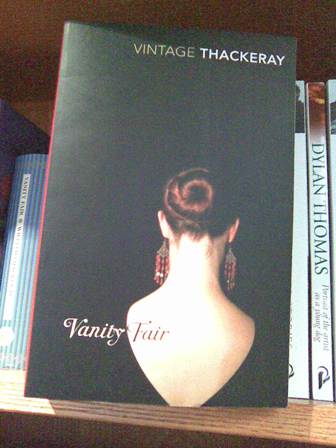
No 10: Vanity Fair by W M Thackeray
What’s it about?
Vanity Fair is ostensibly the tale of two friends – Amelia Sedley and Rebecca Sharpe – from the moment they leave their genteel boarding school for young ladies through their loves and losses of adulthood. The contrast between the two is evident from the outset, not least in their status within the school: Amelia is the daughter of a wealthy gentleman; Becky, the daughter of a French actress (a highly pejorative term at the time the book was written), works at the school in exchange from tuition. Against the backdrop of the Napoleonic wars, Vanity Fair is a caustic satire of the mores and morals of the British upper classes.
What’s it got to do with leisure?
Given that our focus is on the monied classes of the early nineteenth century, leisure features heavily. Early on in the story the romantic machinations of the determinedly indefatiguable Becky and the unctuously pious Amelia take us to Vauxhall pleasure gardens, one of London’s most popular and latterly most notorious leisure venues. It is a fair where the well-to-do and the ne’er-do-wells can all go about the business of pleasure in their own ways and the scene recalls the title of the novel. In the author’s introduction to the story, Thackeray invites the reader to witness the bustle therein, noting the “great quantity of eating and drinking, making love and jilting, laughing and the contrary” while holding out little hope of contentment for those taking part. “Some people consider fairs immoral altogether,” he observes, “and eschew such, with their servants and families: very likely they are right.” Away from the broad themes, there is also a notable but easily missed subplot that suggests an aptitude for games may well be the mark of a bounder.
Why should I read it?
Vanity Fair is that cherished item in any library, the classic nineteenth century novel that is engaging, intelligent and highly readable. Its wit is caustic but genuine, its characters are detailed and rounded but not so numerous as to require a list of dramatis personae to hand, and its plot maintains a directness and simplicity while encompassing the minutiae and grandiosity of numerous lives and events of historical importance.
William Makepiece Thackeray was a contemporary of Charles Dickens and is thus fated to be compared with that most famous of English novelists. All but the most hardened of Dickens apologists will accept that the contrast, rather than the comparison, of the two authors is most striking and most rewarding for anyone looking to pick up Vanity Fair. Thackeray’s is the more reserved approach to storytelling and Vanity Fair, the most celebrated of Thackeray’s works, admirably demonstrates the value of a less sentimental, a less overtly dramatic way of working than that generally favoured by Dickens. Where Dickens is so often a compaigner addressing specific topics (the law in Bleak House, education in Oliver Twist, debtors’ prison in Little Dorrit, by way of example), Thackeray takes the whole of a society obsessed with itself and its own importance as his subject. While Dickens rails at causes of historic importance, Thackeray is content to offer a sense of history, leading his characters through the reverberations of the Napoleonic Wars and examining folly where he finds it. He rarely has to wait long.
The subtitle of Vanity Fair is “a novel without a hero” and this summarises Thackeray’s attitude to the leading characters in the book; there are a great many vying for attention but few are worthy of heroic status. Thackeray may well on occasion have sympathy with their respective plights but he is not indulgent or forgiving of their follies. This makes for a more measured narrative than one might find in Dickens. Where Dickens excels at vividly dramatic scenes, never afraid to lay on heart-warming or heart-wrenching sentimentality with abandon, Thackeray is more coolly observant of the world he depicts. An acute and acerbic commentator, Thackeray is always willing to let a scene unfold quietly, confident that his reader will be able to appreciate the significance of the action.
Vanity Fair was originally published in serial form but was soon offered to an eager public in what was to be considered the conventiona form of a novel. Thackeray’s approach to narrative renders Vanity Fair a fully formed and seamless work that will offer encouragement to any reader trying to work up the courage to take on a lengthy Victorian novel or any reader still bearing the scars of having been compelled to take them on at school.
the leisure manager’s library
An occasional series offering a guide to leisure-related literature
